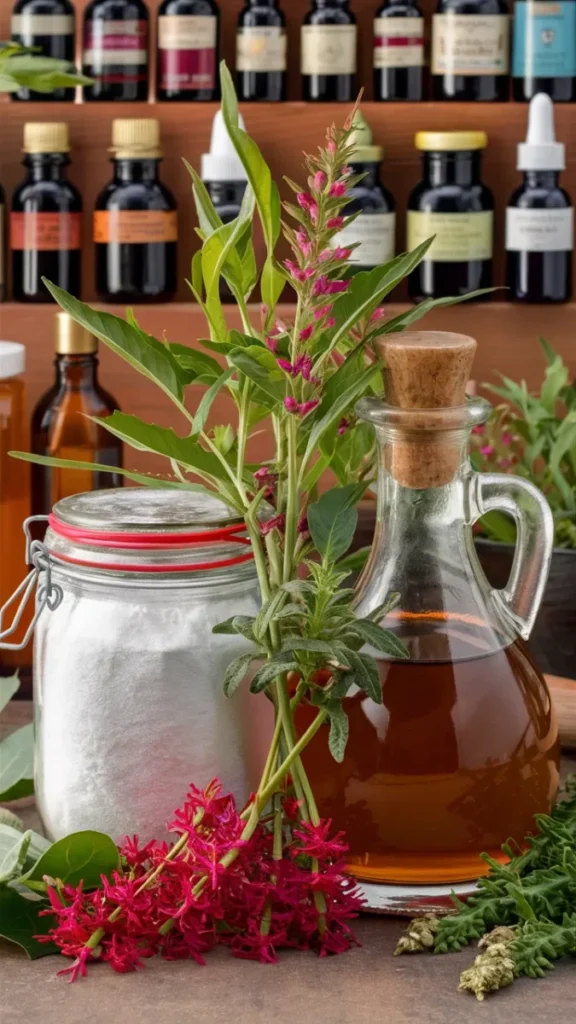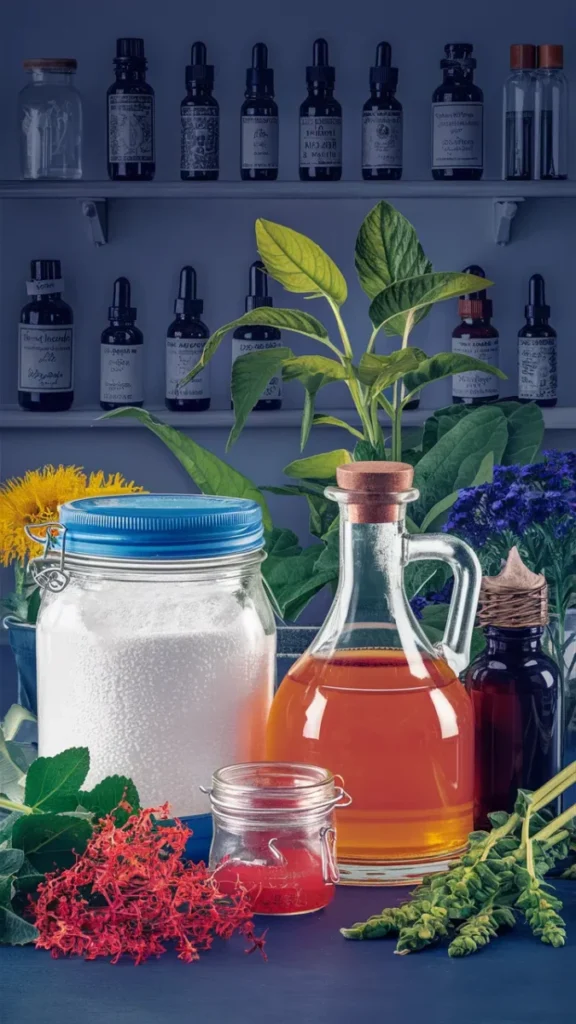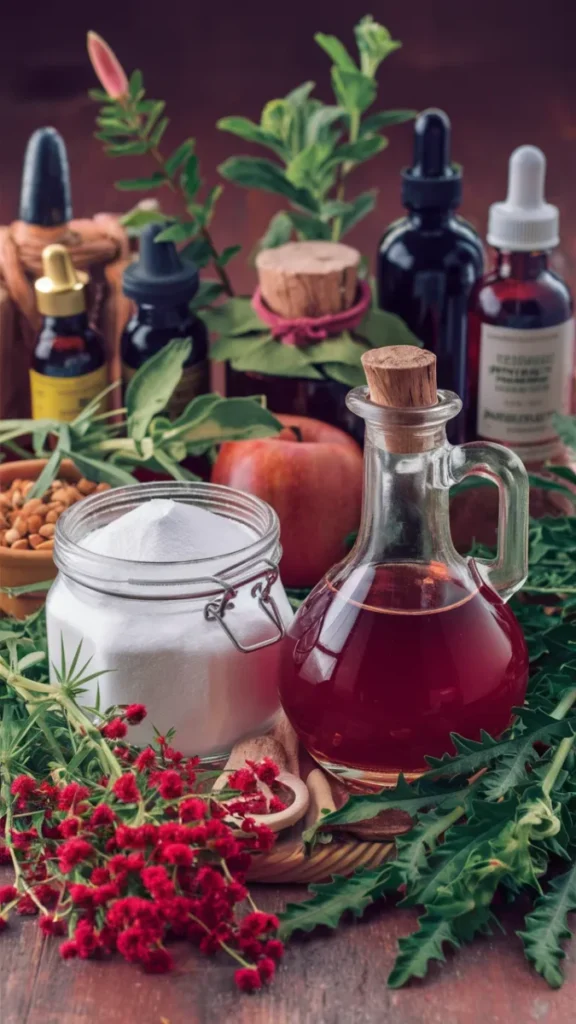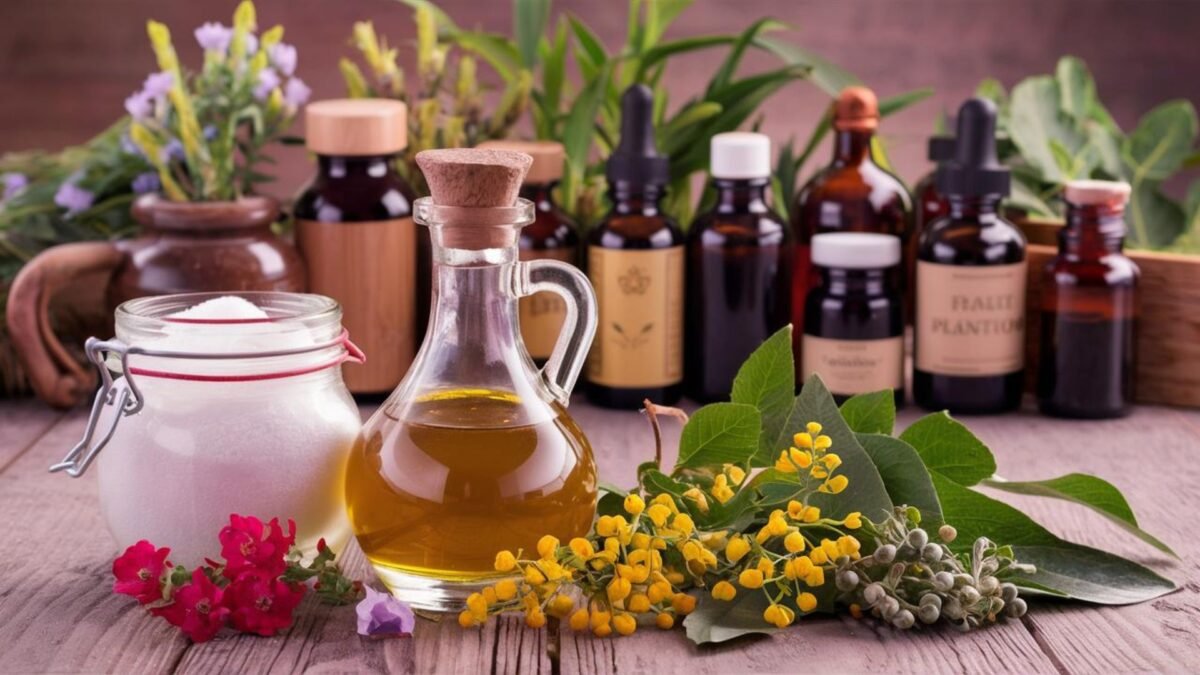Are you tired of dealing with the itchy, blistering rash of poison ivy?
Look no further!
This article unveils 7 poison ivy remedies that you’ve likely never heard of before, and they’ll provide fast, effective relief.
Key Takeaways:
- Common household items like baking soda and apple cider vinegar can soothe poison ivy symptoms
- Natural plants like jewelweed and plantain have powerful anti-inflammatory properties
- Herbal tinctures and homeopathic remedies offer a holistic approach to managing poison ivy
Regardless of whether you’re an avid gardener or just enjoy spending time outdoors, learning how to treat poison ivy is an essential survival skill.
In this article, you’ll discover a wealth of natural, affordable remedies that can help you overcome even the most stubborn poison ivy rashes.

And if you’re looking to take your survival gardening skills to the next level, be sure to check out our guide on growing potatoes as a survival crop.
Table of Contents
Immediate Relief for Poison Ivy Rash
Cool compresses can provide quick relief for the itching and inflammation caused by a poison ivy rash.
Saturate a clean cloth with cool water and gently apply it to the affected area.
This helps constrict blood vessels and reduce swelling. Repeat as needed.
A simple baking soda paste also works wonders. Mix 1 part baking soda with 3 parts water to create a spreadable paste, then apply it directly to the rash.
The baking soda helps neutralize the irritating oils and dry out the blisters.
For full-body relief, an oatmeal bath can soothe the entire skin. Grind plain, uncooked oats into a fine powder and add it to your bathwater. The colloidal properties of the oats help relieve itching.
Key Poison Ivy Rash Relief Remedies:
- Cool compresses
- Baking soda paste
- Colloidal oatmeal baths
A quick application of any of these remedies can provide almost instant relief from the discomfort of a poison ivy rash.
Natural Plant-Based Remedies
Certain plants found in the wild can be effective in treating poison ivy exposure.
Jewelweed, also known as touch-me-not, contains natural compounds that counteract the irritating oils in poison ivy.
Crush the fresh leaves and stems and apply the juices directly to the affected skin.
Another common wild plant, plantain, has anti-inflammatory properties that can reduce swelling and itching.
Simply chew or crush the fresh leaves to extract the soothing juices, then apply to the rash.
Aloe vera is a well-known natural remedy for various skin irritations, including poison ivy. The cooling, soothing gel inside aloe vera leaves provides fast relief and helps promote healing.
Key Natural Poison Ivy Remedies:
- Jewelweed
- Plantain
- Aloe vera
These plant-based remedies leverage the inherent properties of nature to soothe and heal poison ivy rashes.
Household Ingredients as Poison Ivy Cures

Many common household items can also be used to treat poison ivy. Apple cider vinegar is a versatile remedy – its acidic properties help dry out blisters and rashes.
Apply it directly to the affected area or dilute it with water for a soothing soak.
Witch hazel is another effective option.
This astringent herb contains tannins that can reduce inflammation and provide itch relief. Soak a clean cloth in witch hazel and apply it to the rash.
Bentonite clay is a powerful natural detoxifier that can draw out the irritating oils from poison ivy.
Mix the clay with water to create a paste, then apply it to the rash and let it dry before rinsing.
Key Household Poison Ivy Remedies:
- Apple cider vinegar
- Witch hazel
- Bentonite clay
These common household items offer affordable and accessible alternatives to conventional poison ivy treatments.
Herbal Tinctures and Teas

For more targeted relief, certain herbs can be used to create tinctures and teas. Licorice root, for example, has anti-inflammatory and soothing properties that can provide systemic relief.
Steep the dried root in hot water to make a tea, or take a licorice root tincture orally.
Chamomile is another herb with powerful skin-soothing abilities.
Make a strong chamomile tea and use it to soak affected areas, or apply a cool chamomile compress directly to the rash.
Yarrow is a versatile herb that can be used both topically and internally to treat poison ivy. It has astringent, anti-inflammatory, and antiseptic properties. Make a yarrow tincture or tea to ease symptoms.
Key Herbal Poison Ivy Remedies:
- Licorice root
- Chamomile
- Yarrow
These herbal remedies provide a more holistic approach to managing poison ivy rashes and symptoms.
Homeopathic Remedies

Homeopathic medicines can also be effective in treating poison ivy.
Rhus toxicodendron, made from the poison ivy plant itself, is a common homeopathic remedy for poison ivy rashes. It can help relieve itching, blistering, and redness.
Grindelia, also known as gumweed, is another homeopathic option. It has anti-inflammatory and soothing properties that can alleviate poison ivy symptoms.
Urtica urens, or stinging nettle, is a homeopathic remedy that can help counteract the effects of poison ivy exposure. It’s particularly useful for treating severe reactions and widespread rashes.
Key Homeopathic Poison Ivy Remedies:
- Rhus toxicodendron
- Grindelia
- Urtica urens
Homeopathic treatments offer a natural, holistic approach to managing poison ivy, often with fewer side effects than conventional medications.
Avoiding and Preventing Poison Ivy
The best way to deal with poison ivy is to avoid it altogether. Knowing how to identify poison ivy is the first step.
Look for the characteristic three-leaf clusters, often with a shiny, oily appearance. Avoid brushing against or touching any suspicious plants when outdoors.
If you’re planning to spend time in areas with potential poison ivy, check out these winter gardening techniques to help you prepare.
Wearing protective clothing can also help prevent exposure. Long sleeves, pants, and gloves can create a barrier between your skin and the irritating oils. Tuck pant legs into socks or boots to prevent the oils from reaching your skin.
If you do have poison ivy in your yard, it’s important to clear it out as soon as possible.
Use herbicides or physically remove the plants, being careful to avoid skin contact. Dispose of the debris properly to prevent further spread.
You can also try using household items as garden fertilizers to help keep your garden healthy and poison ivy-free.
Key Poison Ivy Prevention Strategies:
- Identify poison ivy
- Wear protective clothing
- Clear poison ivy from your yard
Proactive prevention is the best way to avoid the painful consequences of a poison ivy rash.
When to See a Doctor
Most poison ivy rashes can be managed at home with the remedies discussed, but there are some cases when it’s best to seek medical attention. Severe reactions, with extensive blistering, swelling, or systemic symptoms, may require prescription medications or other intervention.
If the rash spreads to sensitive areas like the eyes, genitals, or mouth, or if you experience systemic symptoms like fever, chills, or nausea, it’s important to see a doctor right away.
Persistent or recurrent rashes that don’t respond to home treatments may also warrant a visit to the doctor. They can provide stronger topical or oral medications to break the cycle of reactions.
Signs You Should See a Doctor for Poison Ivy:
- Severe reactions
- Systemic symptoms
- Recurrent/persistent rashes
Seeking professional medical care is essential for managing serious or complex poison ivy cases.


